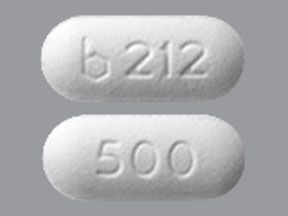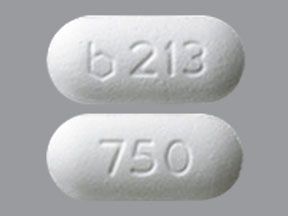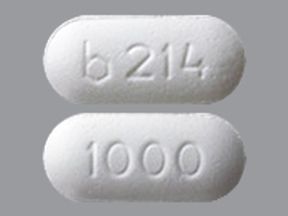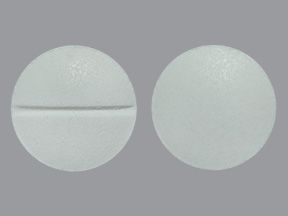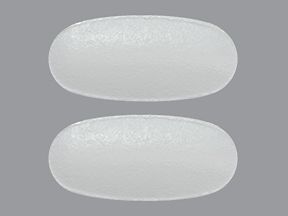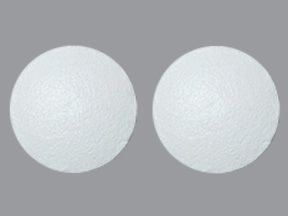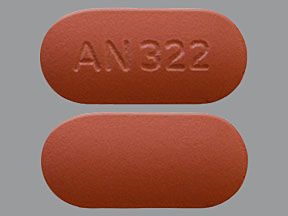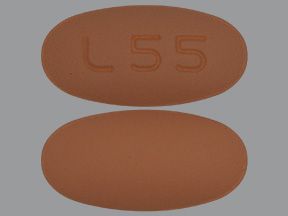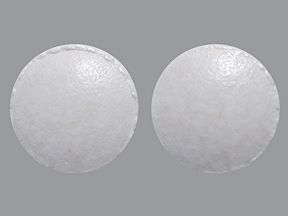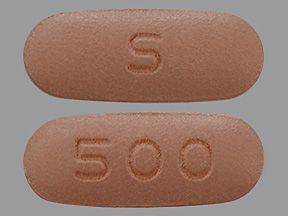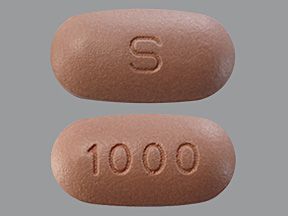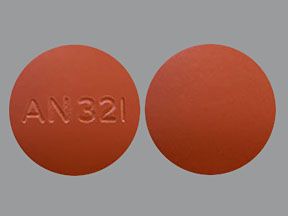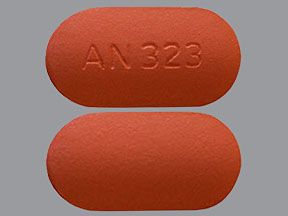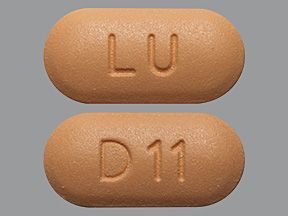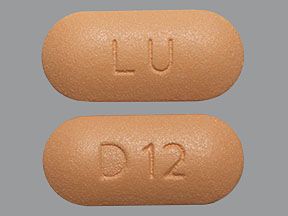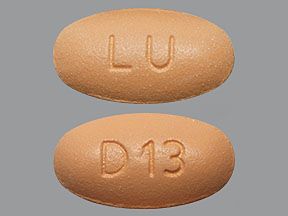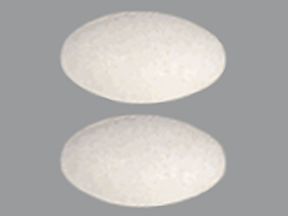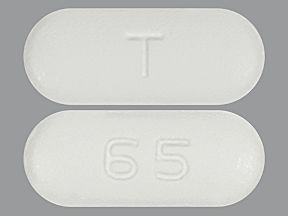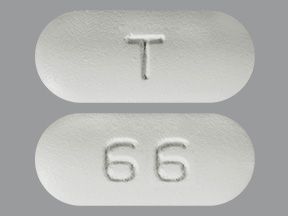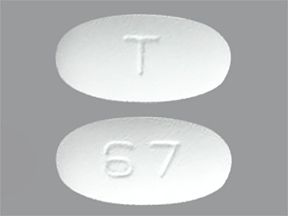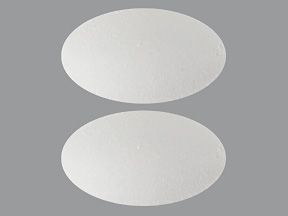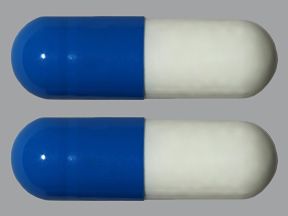- Prescription niacin is available as a generic drug and as brand-name drugs. Brand names: Niacor, Niaspan.
- Niacor comes as an oral tablet, and Niaspan comes as an oral extended-release tablet. Generic niacin comes in both forms.
- Prescription niacin is used to reduce the levels of cholesterol and triglycerides (fatty substances) in your blood, and decrease your risk of a heart attack. It works along with diet, exercise, and weight loss.
- Muscle effects: Niacin may increase your risk of muscle breakdown. Your risk is higher if you’re a senior, take a statin drug, or have diabetes, problems producing enough thyroid hormones, or kidney disease. Tell your doctor right away if you have unexplained muscle soreness, pain, or weakness.
- Liver effects: Niacin may cause your liver function lab test results to be abnormally high. Your doctor will monitor this while you’re taking this drug.
Prescription niacin comes as an oral tablet and an oral extended-release tablet. Other forms are available over the counter.
Prescription niacin is available as the brand-name drugs Niacor and Niaspan. It’s also available as a generic drug. Generic drugs usually cost less. In some cases, they may not be available in every strength or form as the brand-name version.
Niacin may be used as part of a combination therapy. This means you may need to take it with other medications. These may include bile acid resins and other cholesterol-lowering medications.
Why it’s used
Niacin should be used with diet, weight loss, and exercise to:
- reduce the risk of another heart attack in people who have had a heart attack and have high cholesterol.
- prevent buildup of cholesterol and fats along the walls of blood vessels in people with high cholesterol and heart disease.
- reduce the amount of triglycerides (fatty substances) in the blood in people with very high levels who are at risk of diseases affecting the pancreas.
- lower cholesterol levels.
How it works
Niacin belongs to a class of drugs called antilipemic agents. A class of drugs is a group of medications that work in a similar way. These drugs are often used to treat similar conditions.
Niacin works by lowering both your low-density lipoprotein (LDL) or “bad” cholesterol and other fatty substances (triglycerides) in your blood and raising your high-density lipoprotein (HDL) or “good” cholesterol. Niacin works with exercise and a healthy diet to improve your cholesterol levels.
Niacin oral tablet doesn’t cause drowsiness, but it can cause other side effects.
More common side effects
Some of the more common side effects of niacin can include:
- reddening and warming of your face (flushing)
- diarrhea
- nausea
- vomiting
- increased cough
- itching
If these effects are mild, they may go away within a few days or a couple of weeks. If they’re more severe or don’t go away, talk to your doctor or pharmacist.
Serious side effects
Call your doctor right away if you have serious side effects. Call 911 if your symptoms feel life-threatening or if you think you’re having a medical emergency. Serious side effects and their symptoms can include the following:
- Muscle problems. Symptoms can include:
- unexplained muscle weakness, tenderness, or pain
- Liver problems. Symptoms can include:
- tiredness or weakness
- loss of appetite
- upper stomach pain
- dark-colored urine
- yellowing of your skin or the whites of your eyes
Disclaimer: Our goal is to provide you with the most relevant and current information. However, because drugs affect each person differently, we cannot guarantee that this information includes all possible side effects. This information is not a substitute for medical advice. Always discuss possible side effects with a healthcare provider who knows your medical history.
Niacin oral tablet can interact with other medications, vitamins, or herbs you may be taking. An interaction is when a substance changes the way a drug works. This can be harmful or prevent the drug from working well.
To help avoid interactions, your doctor should manage all of your medications carefully. Be sure to tell your doctor about all medications, vitamins, or herbs you’re taking. To find out how this drug might interact with something else you’re taking, talk to your doctor or pharmacist.
Examples of drugs that can cause interactions with niacin are listed below.
Cholesterol drugs
Certain cholesterol drugs called statins may increase your risk of muscle problems when taken with niacin. Examples of these drugs include:
- atorvastatin
- fluvastatin
- lovastatin
- pitavastatin
- pravastatin
- rosuvastatin
- simvastatin
Other cholesterol medications called bile acid sequestrants can reduce the absorption of niacin. You should take niacin 4–6 hours after taking a bile acid sequestrant. Examples of these drugs include:
- cholestyramine
- colestipol
- colesevelam
Disclaimer: Our goal is to provide you with the most relevant and current information. However, because drugs interact differently in each person, we cannot guarantee that this information includes all possible interactions. This information is not a substitute for medical advice. Always speak with your healthcare provider about possible interactions with all prescription drugs, vitamins, herbs and supplements, and over-the-counter drugs that you are taking.
This drug comes with several warnings.
Allergy warning
Niacin can cause a severe allergic reaction. Symptoms can include:
- trouble breathing or swallowing
- swelling of your face, throat, tongue, lips, eyes, hands, feet, ankles, or lower legs
- skin rash
- hives
- itching
Call 911 or go to the nearest emergency room if you develop these symptoms.
Don’t take this drug again if you’ve ever had an allergic reaction to it. Taking it again could be fatal (cause death).
Alcohol interaction warning
The use of drinks that contain alcohol can increase your risk of reddening and warming of your face (flushing) and itching caused by niacin. Your body also processes alcohol and niacin in similar ways. If you drink alcohol, talk to your doctor. You may need to avoid drinking alcohol around the time that you take niacin.
Warnings for people with certain health conditions
For people with liver disease: You shouldn’t take niacin if you have liver disease or abnormally high liver function blood tests. This drug can make your liver disease worse.
For people with kidney disease: Ask your doctor whether niacin is safe for you to take. Niacin is processed by your kidneys. If you have kidney disease, the levels of niacin in your blood can get too high. This could cause you to have more side effects.
For people with diabetes: Niacin can increase your blood sugar levels. If your blood sugar is too high, your doctor may change your dosage of niacin or take you off of the medication.
For people with gout: Niacin can increase your uric acid levels, which may worsen your gout. Your doctor may take you off of niacin if your gout worsens while taking the drug.
For people with active peptic ulcer disease: You shouldn’t take niacin if you have active peptic ulcer disease. This drug can increase the amount of acid in your stomach. This may aggravate your ulcer.
Warnings for other groups
For pregnant women: Niacin is a category C pregnancy drug. This means two things:
- Research in animals has shown adverse effects to the fetus when the mother takes the drug.
- There haven’t been enough studies done in humans to be certain how the drug might affect the fetus.
Talk to your doctor if you’re pregnant or planning to become pregnant. This drug should only be used if the potential benefit justifies the potential risk to your pregnancy.
For women who are breastfeeding: Niacin passes into breast milk and may cause side effects in a child who is breastfed. Talk to your doctor if you breastfeed your child. You may need to decide whether to stop breastfeeding or stop taking this medication.
For seniors: Older adults may process drugs more slowly. A normal adult dose may cause levels of the drug to be higher than normal. If you’re a senior, you may need a lower dosage or a different dosage schedule.
For children: Niacin hasn’t been studied in children. It shouldn’t be used in children younger than 16 years.
All possible dosages and drug forms may not be included here. Your dosage, drug form, and how often you take the drug will depend on:
- your age
- the condition being treated
- how severe your condition is
- other medical conditions you have
- how you react to the first dose
Drug forms and strengths
Generic: Niacin
- Form: oral extended-release tablet
- Strengths: 500 mg, 750 mg, 1000 mg
- Form: oral tablet
- Strengths: 500 mg
Brand: Niaspan
- Form: oral extended-release tablet
- Strengths: 500 mg, 750 mg, 1000 mg
Brand: Niacor
- Form: oral tablet
- Strengths: 500 mg
Dosage for lowering cholesterol and triglyceride levels and reducing risk of a heart attack
Adult dosage (ages 18–64 years)
- Extended-release tablet: The starting dosage is 500 mg taken by mouth once per day at bedtime. After 4 weeks, your doctor may increase your dosage by up to 500 mg. The standard maintenance dosage is 1,000–2,000 mg taken once daily at bedtime.
- Oral tablet: The initial dosage is 250 mg (one-half of the 500-mg tablet) taken by mouth once per day following your evening meal. Your doctor may gradually increase your dosage to a maximum of 6 grams (6,000 mg) per day. The standard dosage is 1–2 grams (1,000–2,000 mg) taken 2–3 times per day.
Child dosage (ages 16–17 years)
- Extended-release tablet: The starting dosage is 500 mg taken by mouth once per day at bedtime. After 4 weeks, your doctor may increase your child’s dosage by up to 500 mg. The standard maintenance dosage is 1,000–2,000 mg taken once daily at bedtime.
- Oral tablet: The initial dosage is 250 mg (one-half of the 500-mg tablet) taken by mouth once per day following the evening meal. Your doctor may gradually increase your child’s dosage to a maximum of 6 grams (6000 mg) per day. The standard dosage is 1–2 grams (1,000–2,000 mg) taken 2–3 times per day.
Child dosage (ages 0–15 years)
This medication hasn’t been studied in children and shouldn’t be used in children younger than 16 years.
Senior dosage (ages 65 years and older)
The kidneys of older adults may not work as well as they used to. This can cause your body to process drugs more slowly. As a result, more of a drug stays in your body for a longer time. This increases your risk of side effects.
Your doctor may start you on a lowered dose or a different medication schedule. This can help keep levels of this drug from building up too much in your body.
Dosage warnings
- To reduce your risk of side effects:
- Take the extended-release form of niacin at bedtime.
- Ask your doctor about taking aspirin. Taking up to 325 mg of aspirin about 30 minutes before taking niacin can reduce flushing (reddening and warming of your face).
- The extended-release form of niacin shouldn’t be substituted for equal doses of regular niacin. This may cause severe liver disease. If your doctor switches you from regular to extended-release niacin, you’ll start on a low dose. Your doctor will slowly increase it if needed.
Disclaimer: Our goal is to provide you with the most relevant and current information. However, because drugs affect each person differently, we cannot guarantee that this list includes all possible dosages. This information is not a substitute for medical advice. Always speak with your doctor or pharmacist about dosages that are right for you.
Niacin is used for long-term treatment. It comes with risks if you don’t take it as prescribed.
If you stop taking the drug or don’t take it at all: If you don’t take niacin, your cholesterol levels may not be controlled. High cholesterol levels put you at a higher risk for heart attack and stroke.
If you miss doses or don’t take the drug on schedule: Your medication may not work as well or may stop working completely. For this drug to work well, a certain amount needs to be in your body at all times.
If you take too much: You could have dangerous levels of the drug in your body. You may have the following symptoms:
- flushing (reddening and warming of your face)
- dizziness
- fast heart rate
- shortness of breath
- fainting
If you think you’ve taken too much of this drug, call your doctor or local poison control center. If your symptoms are severe, call 911 or go to the nearest emergency room right away.
What to do if you miss a dose: Take your dose as soon as you remember. But if you remember just a few hours before your next scheduled dose, take only one dose. Never try to catch up by taking two doses at once. This could result in dangerous side effects.
How to tell if the drug is working: You won’t feel niacin working, but your doctor will check your cholesterol levels to see how well niacin is working. Your doctor may adjust your dose depending on your cholesterol levels.
Keep these considerations in mind if your doctor prescribes niacin for you.
General
- Niacin should be taken with food.
- The extended-release form of niacin should be taken at bedtime.
- Niacin shouldn’t be crushed or cut.
Storage
- Store niacin at room temperature between 68°F and 77°F (20°C and 25°C).
- Keep the container of niacin closed tightly. Protect it from light.
- Don’t store this medication in moist or damp areas, such as bathrooms.
Refills
A prescription for this medication is refillable. You should not need a new prescription for this medication to be refilled. Your doctor will write the number of refills authorized on your prescription.
Travel
When traveling with your medication:
- Always carry your medication with you. When flying, never put it into a checked bag. Keep it in your carry-on bag.
- Don’t worry about airport X-ray machines. They can’t hurt your medication.
- You may need to show airport staff the pharmacy label for your medication. Always carry the original prescription-labeled box with you.
- Don’t put this medication in your car’s glove compartment or leave it in the car. Be sure to avoid doing this when the weather is very hot or very cold.
Clinical monitoring
You’ll need to have certain blood tests done while you take niacin. This monitoring may be done using three tests:
- Lipid panel. Your doctor does this test to check your cholesterol levels. To get an accurate reading, you’ll be asked fast (not eat) for a certain number of hours before having your blood drawn. Your doctor may adjust your dose of niacin based on the results of this test.
- Blood sugar (glucose) test. Your doctor may check your blood sugar level with this test. If your blood sugar is too high, your doctor may take you off of niacin.
- Liver function tests. Your doctor will do blood tests to check how well your liver is working. If your liver isn’t working well, your doctor may have you stop taking this drug.
Your diet
Your doctor may recommend that you eat a cholesterol-lowering diet while you take niacin.
You shouldn’t eat spicy foods while taking niacin. This can reduce your risk of flushing (reddening and warming of your face).
There are other drugs available to treat your condition. Some may be better suited for you than others. Talk to your doctor about other drug options that may work for you.
Disclaimer: Healthline has made every effort to make certain that all information is factually correct, comprehensive, and up-to-date. However, this article should not be used as a substitute for the knowledge and expertise of a licensed healthcare professional. You should always consult your doctor or other healthcare professional before taking any medication. The drug information contained herein is subject to change and is not intended to cover all possible uses, directions, precautions, warnings, drug interactions, allergic reactions, or adverse effects. The absence of warnings or other information for a given drug does not indicate that the drug or drug combination is safe, effective, or appropriate for all patients or all specific uses.

